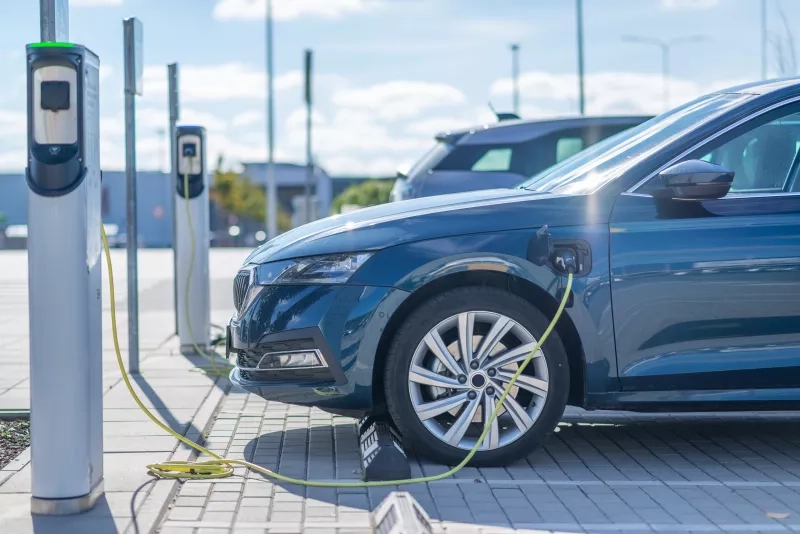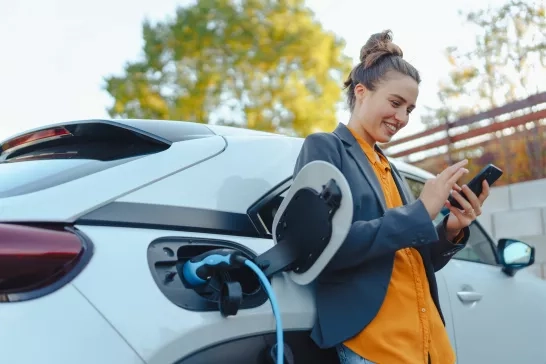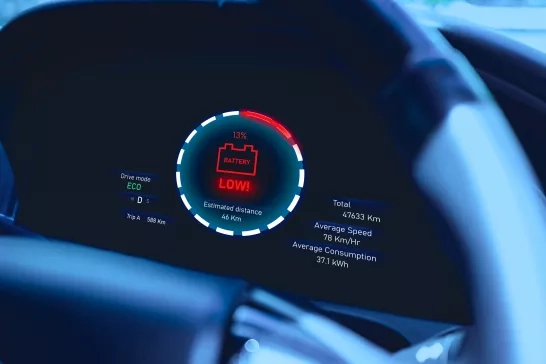
Everything you need to know about electric vehicle charging in Ontario
3 Minute Read
Electric vehicles (EVs) are no longer a rarity on Canadian roads. With Ontario predicting that one in three cars will be electric by 2030, it's clear that EVs are becoming mainstream. Even if you don’t have an electric car yet, chances are you’ll either own or share a ride in one very soon. That makes understanding how EV charging stations work more important than ever.
From charging times to costs and equipment, this article will guide you through the essentials of EV charging stations in Ontario.
Charging levels explained
Electric vehicle chargers are categorized into three levels based on their charging speed and use case. All EVs can use Level 1 and Level 2 chargers, but not all are compatible with Level 3 chargers. Tesla vehicles also have their own proprietary charging system. Here's how they break down:
Level 1 charging
- What it’s for: Home use. Level 1 chargers are designed to work with standard wall outlets, so no special installation is required.
- Charging speed: You can expect to get approximately 8 kilometres of range per hour of charging.
- Best for: Overnight home charging. This is ideal for topping up your battery if you’re only driving moderate distances daily.
Level 2 charging
- What it’s for: Commercial use and faster residential charging. These chargers require specialized installation by a professional electrician.
- Charging speed: Delivers approximately 35 kilometres of range per hour and can often fully charge a vehicle in as little as 2 hours.
- Best for: Those looking for a quicker charging solution, whether at public stations or in homes with high usage needs.
Level 3 charging
- What it’s for: Rapid charging at public or highway stations. These chargers provide extreme speed but cannot be used by all EVs. Most plug-in hybrids and some all-electric vehicles are not compatible.
- Charging speed: Offers approximately 250 kilometres of range in about 20 minutes.
- Best for: Long-distance road trips or a quick recharge on the go.
How much does charging cost?
The cost of charging your EV can vary greatly depending on the location and provider.
- Free stations: Many public locations offer free charging, although some may limit usage to only a few hours.
- Pay-per-use stations Often charge on a per-kilowatt-hour (kWh) basis or set a flat hourly rate.
For Tesla owners, some models come with an annual charging credit, after which fees apply. It’s always a good idea to check the fees for a charging station before heading out to avoid any surprises.
Range
According to William Skorupinski, CAA North & East Ontario's Vice President of Automotive and Mobility Services, several factors impact how far you can go. "Depending on the car, the range is 200 to 600 kilometres on one charge. The colder it gets, or the faster you drive, the more diminished the range. Consistent driving speed also plays a role," he says.
Ontario's EV charging network
Out of 8.7 million vehicles in Ontario, just 75,000 are electric vehicles. Even so, the province predicts that by 2030, one in three cars will be electric. To meet demand, the Ontario government has plans for 69 fast chargers at all 23 ON Route stations along major highways. In total, the province has 1700 public charging stations with 5000 ports. The City of Ottawa has 24 on-street charging stations.
If your driving range is 200 kilometres, you probably use your EV for city driving, but it is possible to take a road trip past Level 3, fast charging stations. Make sure you're fully charged before you set out, plan your route to hit fast chargers and keep your CAA Membership handy if anything goes awry, William says, adding that in Northern Ontario, Level 3 chargers can be located within 300 kilometres of each other, making travelling with an EV very feasible.
Where to find charging stations
To make your EV road trip stress-free, use sites like chargehub.com or www.energyhub.org. These platforms will locate charging stations based on your route and show important information like availability, pricing, and charging speed.
Why it matters
As the shift toward electric vehicles accelerates, understanding charging stations isn’t just for EV owners—it’s for everyone sharing the roads. Whether you're considering making the switch or you’re already driving an EV, having a handle on these details will keep you ahead.
With Ontario’s expanding EV charging network and accessible tools for route planning, driving electric has never been more convenient.
Want to learn more about EVs? www.caaneo.ca/advocacy-EV
Know before you buy: CAA North & East Ontario content aims to be neutral and informative. Whether you’re new to EVs or looking for a replacement vehicle, it’s important to ask questions, talk to experts and do a test drive with a dealership so you can make an informed decision.




